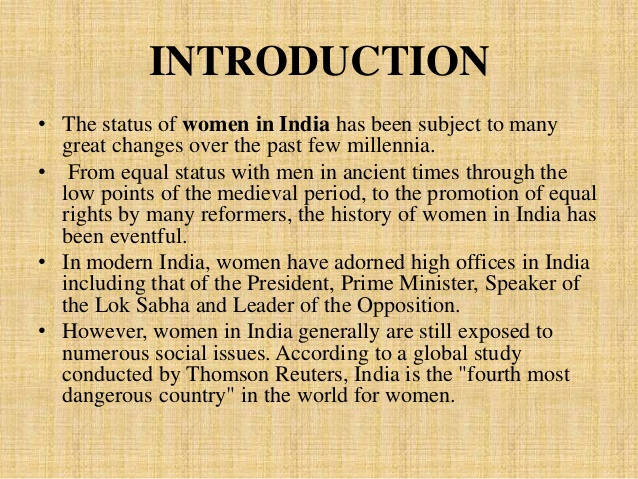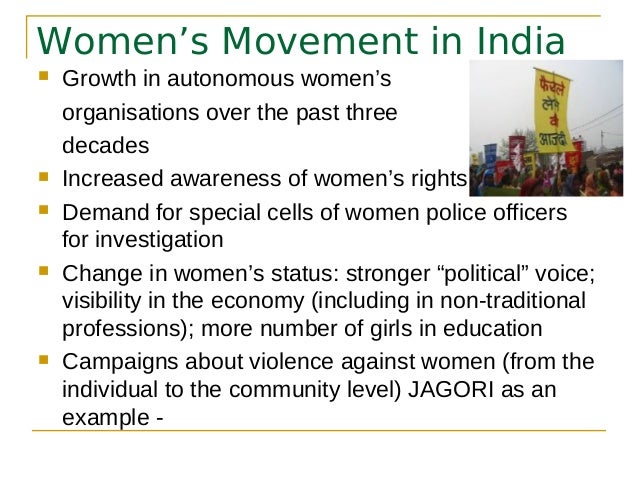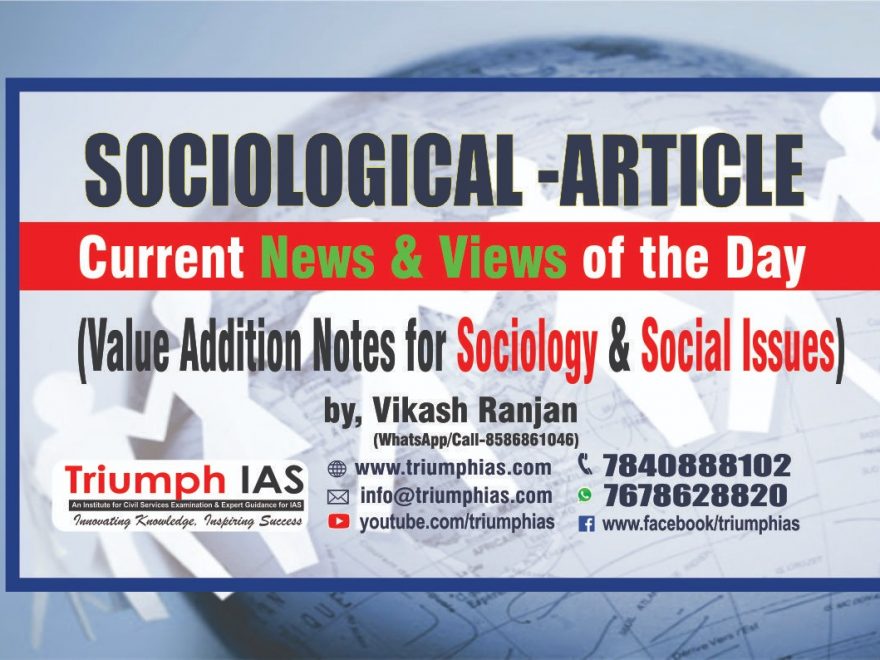Women’s’ Movements in India: Analysis
Relevance: Sociology: Social Movements in Modern India: Women’s movement. & G.S paper I: Society and social issues & Modern history: Women Movement
INTRODUCTION

The status of women has been the central concern of many reform movements before and after independence. Leaders of the Brahmo Samaj and the Arya Samaj were concerned with issues like sati, remarriage, divorce, female education, purdah system, polygamy, and dowry.
Justice Ranade criticised child marriages, polygyny, restrictions on remarriage of widows, and non-access to education.
Raja Ram Mohan Roy played an important role in getting the sati system abolished. Ishwar Chandra Vidyasagar and Maharishi Karve pleaded for remarriage of widows. Gandhiji took interest in collective mobilisation of women to fight for political freedom as well as for their social and political rights.
Some scholars have examined the role of women in political independence movements at micro level, i.e., on regional basis.
For example, Aparna Basu (1984) and Pravin Sheth (1979) studied it in Gujarat, Raghavendra Rao (1983) in Karnataka, and Uma Rao (1984) in Uttar Pradesh. According to Govind Kelkar (1984), women’s role in the freedom movement was that of the ‘helpers’ rather than that of comrades.
Ghanshyam Shah has referred to some scholars who have pointed out women’s role in tribal, peasant and other movements in Bihar and Maharashtra.
For example, Manoshi Mitra (1984) and Indra Munshi Saldanha (1986) have analysed women’s militant role in tribal movements when women confronted authorities, wielding traditional weapons and maintaining lines of supplies to the rebels in their hidden places.
Sunil Sen (1984), Peter Custers (1987), etc., have analysed their role in peasants’ movements in Telengana, West Bengal and Maharashtra. Meera Velayudhan (1984) has analysed their role in communist-led movement of coir workers in Kerala. Sen has pointed out women’s participation in struggles launched by trade unions in iron ore mines in Madhya Pradesh.
It may be said that women’s participation in movements has been in four major forms:
(i) For social, economic and political rights of specific categories of people like tribals, peasants and industrial workers,
(ii) For improvement in conditions of work and autonomy to women,
(iii) For equal remuneration for work,
(iv) In general social movements on issues affecting men and children like abortions, adoption of children, sexual exploitation, etc.
The liberal egalitarian ideology under the British Raj created conditions for a social awakening among Indian women. Several women’s associations came into existence both at regional and national levels. Banga Mahila Samaj and the Ladies Theosophical Society functioned at local levels to promote modern ideals for women.

The important national organisations were:
— Bharat Mahila Parishad (1904),
— Bharat Stri Mahamandal (1909),
— Women’s Indian Association (1917),
— National Council of Women in India (1925) and
— All India Women’s Conference (1927) and
— Kasturba Gandhi National Memorial Trust.
These organisations took up issues like women’s education, abolition of evil social customs (purdah, child marriage) equality of rights and opportunities and women’s suffer- age. Some women leaders with the support of the Congress party, demanded right of franchise and representation in legislatures.
It could be said that Indian women’s movements worked for two goals: one, liberation or uplift of women, i.e., reforming social practices so as to enable women to play a more important and constructive role in society; and two, equal rights for men and women, i.e., extension of civil rights enjoyed by men in the political, economic and familial spheres to women also.
Jana Everett (1979) calls the former as ‘corporate feminism’ and the latter as ‘liberal feminism’. The strategies used by women’s bodies were: making demands by organising public meetings, presenting views to government officials, forming committees to investigate conditions and holding conferences to mobilise women.
The factors that provided the required incentive to women’s movements were: effect of western education on the male domination on women and on the concept of complementary sex roles, leadership provided by educated elite women, interest of male social reformers in changing social practices sanctioned by religion, changing socio-religious attitudes and philosophies, and decreasing social hostility and opposition of males to women’s associations engaged in self-help activities, and benevolent attitude of political national leaders towards fledgling women’s movements and their enthusiastic support to women campaigns.
The declaring of 1975-85 decade as the International Women’s decade also gave impetus to women’s movements for removing the notion of inferiority of women and giving them a sense of identity.
The Central Social Welfare Board (CSWB) established by the Government of India in 1953, also promotes and strengthens voluntary efforts for the welfare of women. The Ministry of Welfare, Government of India, too gives grants to voluntary organisations for activities like construction/expansion of hostels for working women in cities.
Discussion on social movements can be concluded by stating that social movements in India mainly focused either
(a) on achieving system stability by arresting the onslaught of rapid social change and reinforcing the existing values and norms and
(b) attempting system change through the destruction and replacement of the old and induction of new structures.
It can be averred that social movements were either change-resisting or change-promoting, i.e., those which aimed at the participants’ deprivation and concerned with their welfare and uplift. We concentrated on those reform movements which pursued their goals through institutionalised means, without unleashing violence and were initiated by some ideological groups through mobilisation process.
The analysis of six types of movements suggests that movements are generally initiated and spread by charismatic leaders or by political parties and religious organisations. In the former case, the ideologies are transmitted downwards while in the latter case, these are transmitted upwards. Once any movement based on certain ideology changes, it is not necessary that it will spread in course of time, it can gain in strength and it can also lose its vitality either because it is considered irrelevant or because it is suppressed by the government.
Other thing which emerges from the analysis is that:
(i) Social movements are products of a social structure and emerge out of certain conditions in the social structure,
(ii) Social movements themselves have a structure which makes them functional relative to their goals, and
(iii) Social movements have consequences for the social structure of which they are the products.
For more such notes, Articles, News & Views Join our Telegram Channel.
Click the link below to see the details about the UPSC –Civils courses offered by Triumph IAS. https://triumphias.com/pages-all-courses.php

